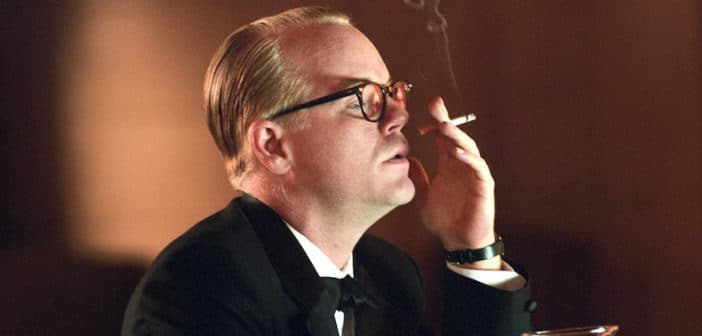 Late last week it was suggested that a cultural stigma against maintenance medications such as methadone and Suboxone helped kill Philip Seymour Hoffman.
Late last week it was suggested that a cultural stigma against maintenance medications such as methadone and Suboxone helped kill Philip Seymour Hoffman.
Buprenorphine’s Role
This doesn’t make much sense to me given the fact that, shortly after he died, it was reported that buprenorphine was found in Hoffman’s Bethune Street apartment. Buprenorphine is a long-acting opioid the FDA approved in 2002 for opioid detox and maintenance. It’s used mostly for maintenance: it’s the New Methadone, but it’s much easier to get, because while methadone is approved for addiction-treatment only in a clinic setting, buprenorphine can be dispensed in a doctor’s office. Refills can be called in or faxed to pharmacies.
So how did Hoffman get his bupe? Either he was being prescribed buprenorphine for his opioid habit, i.e. he was “on maintenance”—as so many opioid addicts are: buprenorphine maintenance is a booming business in this country. Or else, as many heroin users do, he obtained his buprenorphine on the street.
Poor heroin users often cop street “bupe” to tide them over between fixes. But Hoffman was far from poor. So it’s speculation, of course, but I think it’s more likely he got his buprenorphine from a doctor. That’s what doctors do these days with opioid addicts: When we get honest about our addictions inside the exam room (and because Hoffman had spent 23 years sober and abstinent via 12-step fellowships, it may be fair to say he had practice in being rigorously honest) the doctors’ fear kicks in and they boot us into Suboxone clinics, where we’re prescribed upwards of 16mg of this very strongly-binding, fat-soluble drug that stays in our bodies for days before it’s excreted. In painkilling power it’s weaker than morphine or oxycodone, but in binding power—in its ability to stick to the body’s opiate receptors—it’s the second-strongest out there.
The strongest is fentanyl, the drug that’s been cut into heroin and has killed nearly two dozen in my region alone.
There Is Still A Chance for Opioid Addicts’ Brains
Some publications are wont to report that opioid addicts—like Hoffman, like me—wreck our brains’ opioid receptors forever through drug-use. (This proves they don’t understand how the body’s painkilling system works: a great portion of the body’s opioid receptors actually reside in the gut. Which is why we get that lovely warm feeling throughout our bellies when we use painkillers or shoot heroin.) But there’s at least as much scientific and anecdotal support for the idea of neuroplasticity in recovery—the fact (it’s not just an idea anymore, it’s a fact) that the central nervous system is far more adaptable than we ever before believed and is evolved to use this resilience to recover from major traumas and illnesses, including addiction—especially if we help it by taking care of our bodies in basic ways, with exercise, good nutrition, and relaxation.
So the “old-school” idea is not 12-step programs, as these pieces suggest. “Old-school” is what I was taught as a kid: that once you lose brain cells, you never get them back, that our nervous systems cannot heal.
Still, these publications are putting the idea out there—and it is not a fact, it is just an idea—that if “most opioid addicts” don’t take maintenance medications forever to “correct” the “permanent damage” we’ve done through drug-use, we’re doomed to relapse.
Enter PHPs
The clearest example that this isn’t the solution exists in our states’ physician health programs (PHPs)—systems of recovery designed to help addicted and alcoholic physicians keep their licenses to practice. These programs vary from state to state but generally provide five years of continuous care and oversight. Success rates for PHPs are extraordinarily high—upwards of 80 percent of physicians finish five years of treatment and are able to keep practicing.
These programs ought to be considered models for our citizenry. But they remain off the radar because they’re rigorous, expensive and intensive—five years, as opposed to a 28-day rehab, or even a ten-day or three-day detox.
Also, studies of PHPs show that linking recovery to one’s work is one of the strongest incentives you can give an addict to take responsibility for her healing. Addiction thrives in situations of un- and under-employment not because the poor are somehow more susceptible to addiction, but because the people affected don’t have enough, or any, productive work.
Hoffman, Maintenance Meds and Relapse
It’s sometimes said that PHPs are effective for “highly motivated” addicts. Which leads me to my last point. I find it astonishingly patronizing that some are suggesting that public prejudice against maintenance killed Hoffman. Hoffman was an extraordinarily intelligent, articulate, “highly motivated” man and consummate professional whose work, he said, required him to be extremely introspective and emotionally present. I find it hard to believe he would be so easily swayed by public opinion about his choices.
I can more easily see him protecting his ability to work.
To act with the depth of feeling and nuance that he managed required full use of his entire internal emotional range. And opioid medications—including buprenorphine—necessarily dull one’s range of feeling.
I think it’s more reasonable to suggest that Hoffman tried bupe and found that, while taking it, he couldn’t access his feelings to the degree to which he’d become accustomed.
To be sure, he likely felt a great deal of shame during his relapse. One of the more damaging aspects of some 12-step groups, in my opinion, is their focus on “sober-time”: to “come back” from a relapse after a sober period of 23 years—half one’s life—would have been not only extremely emotionally humbling for anyone but also physically difficult, given that the heroin available these days is wicked strong.
But no way could Hoffman have wrecked his neurology permanently by using heroin for less than a year. I think it’s likely he did what so many who use heroin do: he chipped heroin, then switched to bupe, thinking it might remove his cravings. In fact, buprenorphine reliably does this for many opioid addicts who take it.
But craving is a feeling, and you can’t numb feelings selectively. I think it’s likely that, feeling not-high but not-normal—after all, he’d been sober for 23 years: he knew what His Normal felt like; he knew what it took for him to do his job with the precision and quality with which he was used to doing it—he said what so many of us say when we’re caught between a rock and a hard place.
Screw it.
The Tragic but Familiar Outcome
What he needed was not more drugs. What he needed was a better form of treatment, perhaps the best evidence-based addiction treatment system we have going: the time-consuming, attentive one we give to doctors, the people we trust to protect other people’s lives.
But because Hoffman was “just” an artist, he followed the cheap, easy, brief trajectory that ordinary people in this country follow.
Pills. Then heroin. Then Suboxone. Then heroin again. Then death.
Photo courtesy of Wolf Gang via Flickr [CC0 (https://creativecommons.org/licenses/by-sa/3.0)] (cropped)
Sponsored DISCLAIMER: This is a paid advertisement for California Behavioral Health, LLC, a CA licensed substance abuse treatment provider and not a service provided by The Fix. Calls to this number are answered by CBH, free and without obligation to the consumer. No one who answers the call receives a fee based upon the consumer’s choice to enter treatment. For additional info on other treatment providers and options visit www.samhsa.gov.




